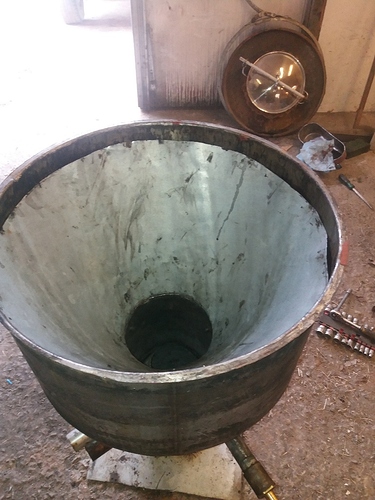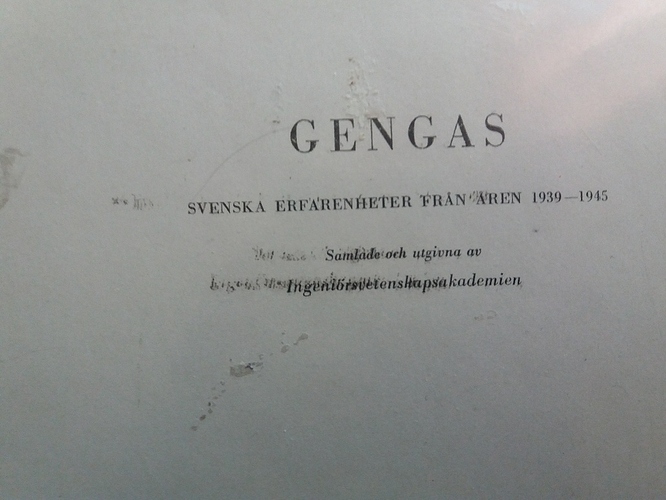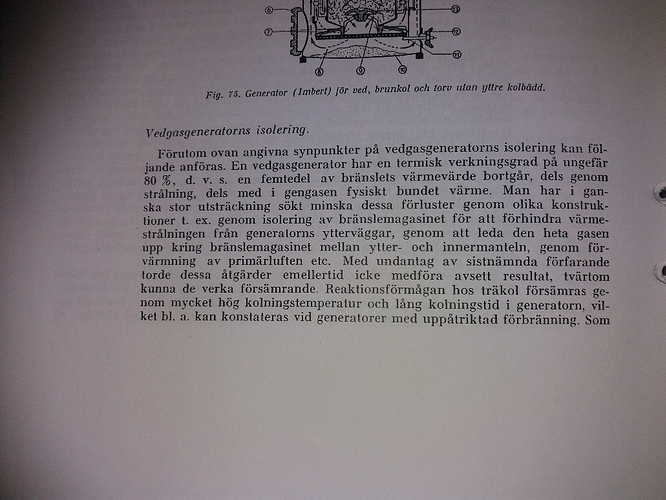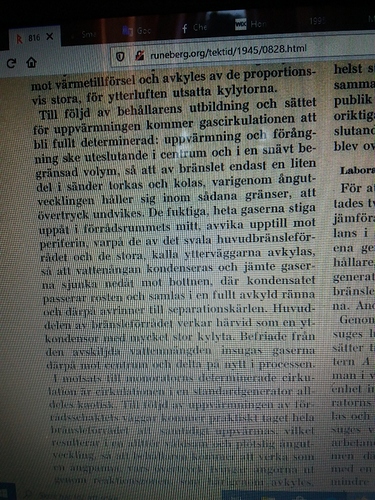Thanks JO, it is that I have 10 cm instead of 3cm which worries me, because the wood is bigger than charcoal, so I do not know if it can be formed charcoal above the nozzles so it is enough.
Hard to tell If that would cause trouble or not. Also, hard to tell if there’s an easy way of shortening the tube.
On another note. A friend of mine just texted me and attached this add. I would love to have some of those things, but it seems he wants to sell it all in one pile and I can’t store that much rust. Maybe you’re interested?
I don’t think I should buy this, otherwise I’ll probably have to stay in the garage for my wife.
I cut the inner tube down so I got about 3-4 cm left down to the nozzles, and have done a cone that @gasman suggested.
Should I drill holes or slit the cone so that the air can more easily reach the outer wall, for condensation?
Okay, but if I understand it correctly, it is best for condensation with a simple wall, as well as not heating the wood too soon. for the gas gets worse. (It says in the gas book they did
tests during the war) if that’s true.
Consider the below as my personal opinion only. I can’t refer to any reliable source ![]()
Hm…don’t know where you read that. If it said “better with a solid wall” (rather than perforated) I would agree right away.
I consider my solid inner wall not just separating hot and cold flows, but also keeping debrie from mixing with hopper juice.
I’m sure WK-tubes works the best, but they are a bit more work (incl. thin material welding).
That might be true if you have zero hopper condensation (old true Imbert with a heated hopper). Could probably cause too much steam to be dragged through the charbed.
I bought this book about 20 years ago when I first became interested, but if it is true or if I misinterpret it I do not know. ( isent it the principle of the cold wall)
Jan,
See your post #33 of this thread, click on Link, Page 3, Figure 5 “monorator” Hopper. 
Yes, it is because of the monorator that I am a little thoughtful about having the cone, which is in the way of the cold wall on the unit, larger surface area than the one on the unit it is difficult to get.
True, but you still need somthing to prevent the chunks from getting wet on the hopper floor/gutter.
I see only three ways around this.
No1 Single wall: Lower/flatten the cone to expose more cold wall surface.
No2 Double wall: Allow for moist fumes to circulate in the hopper.
No3 WK tubes.
I do not know how a WK works, so can not say anything about this.
But the Modoratorn, you can read about it in the link above, here is an excerpt of how they think it works with drying.
As you can see, the wood works as a cooler as well.
I realise now I read that article years back. I remember the snowball test  What I don’t remember reading is the fact that the majority of the condensation in a true monorator is made in the peripheral fuel. Seems to me those chunks must get dripping wet.
What I don’t remember reading is the fact that the majority of the condensation in a true monorator is made in the peripheral fuel. Seems to me those chunks must get dripping wet.
I found this guy on Youtube. He uses external tubes on his hopper to collect condensation 
Good morning JO
Thanks for the video , I had forgotten it was out there 
Below is another one form about 250 K miles and several years back .
It is sad that i cannot buy your book in Europe, it would be fun to see how the unit works
@Wayne does your engine light come on when you drive on wood?
Good morning to you Sir.
On my V-10 dodge ram the motor light has been on from about 2012 . I can not remember if it was on before I put the gasifier on it but it does stay on all the time ( 50,000 miles )
On the dakota vehicles I have gasified the light may come on rarely but a off and on of the switch will cause it to go out and stay out .
Thanks Wayne, then I don’t have to worry about the engine light.
My S10 engine light is on too. I just thought that the computer sees that the fuel pump and pressure is off and making the light go on. - maybe I’m wrong about that.
Thanks Don, I’ll see if I can read the code, should be stored in obd.
There is a tempretures sensor in the intake manifold that corrodes or is damaged when burning out the carbon.
On my Ford if it is not working it tells the CPU that the air temp is -30 deg and so riches the gasoline mixture = poor gas mileage.
If running on wood it makes no difference.
I replaced mine , $40, and mounted it under the hood and plugged the hole with the failed sensor. No more check engine light!






